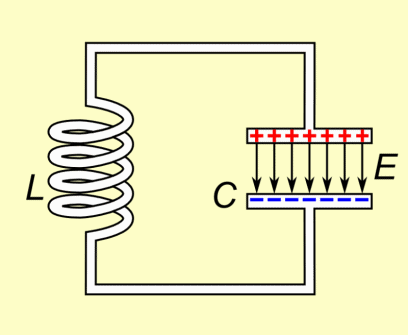DerStrom8
Super Moderator
That is the thing I am doing. I want to understand better short distance wireless energy transfer and build some simple circuits. Maybe I will build a Tesla coil or not, but I am learning.
One question. When people speak about magnetic resonance or resonance inductive coupling. What are they refering to? Why magnetic and not electric, capacitive or electromagnetic? Do the coils have the same inductance and for that reason people call it "inductive coupling"?
Good for you! It's nice to see some initiative taken by the learner
"Resonance" is a term referring to the natural oscillation frequency of an LC (that is inductor-capacitor) circuit. A simple Tesla Coil (Spark gap type) has two LC circuits (also referred to as "tank" circuits). The first, or "primary", tank circuit is made up of the main capacitor and the primary coil. Together they oscillate at a particular frequency based on the values of L and C. As the capacitor discharges it charges the inductor, and eventually the inductor begins to discharge and it starts charging the capacitor. This cycle repeats over and over again, and the rate at which it does this is called its "resonant frequency".
The secondary tank circuit is very similar electrically, though instead of having a high capacitance and a low inductance like the primary tank circuit, the secondary circuit has a high inductance and a low capacitance. The inductance comes from the secondary coil and the capacitance comes from the topload. They also have a "resonant frequency". The trick is to match the frequency of the secondary tank circuit with that of the primary tank circuit. When they're perfectly matched nearly all of the energy in the primary tank circuit is transferred to the secondary tank circuit by way of magnetic (or electromagnetic) coupling. As you know when you pass current through a coil of wire it creates a magnetic field. And when this field is oscillating, it can induce current in a nearby coil. If the resonant frequency of both circuits are matched, you get the maximum power transfer between the two. This is how energy is sent from one coil (the primary) to the other coil (the secondary) without being electrically connected.
Inductive coupling, magnetic coupling, and electromagnetic coupling are all referring to the same concept. When passing current through an inductive element you get a magnetic field, which is often referred to as an electromagnetic field because it is generated by electrical current.
Make sense?
I know you're not necessarily creating a Tesla coil right now, but I feel it is a perfect example of these concepts in action. I hope I didn't throw you off with all the Tesla coil terms--Most of them can still be applied to any coupled resonant circuits.
Matt




